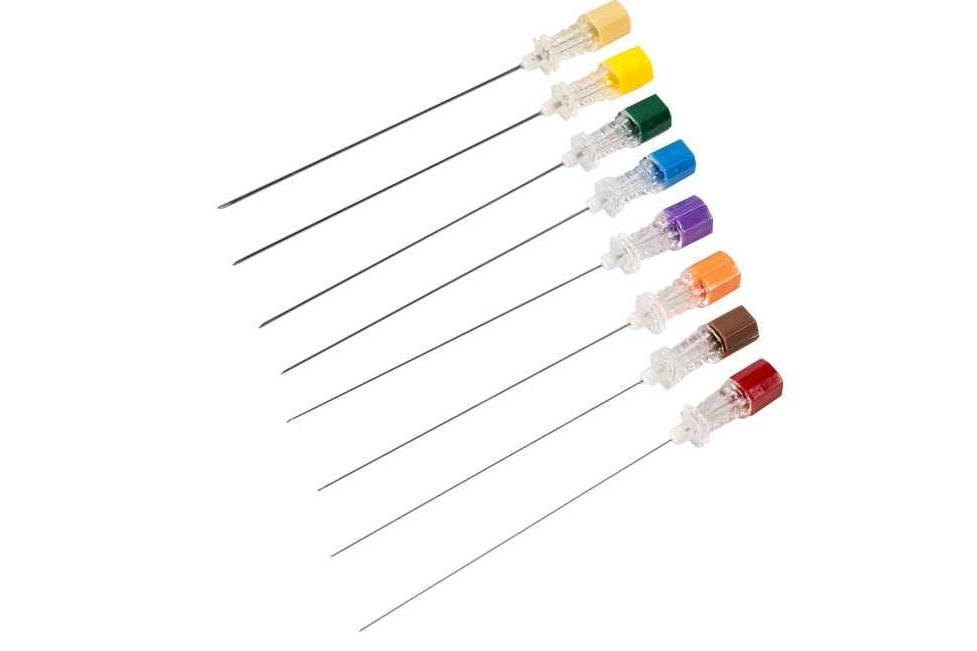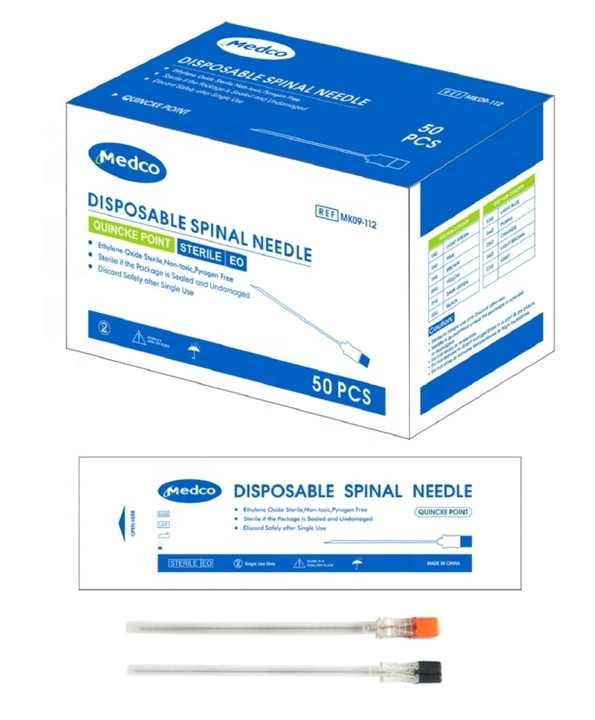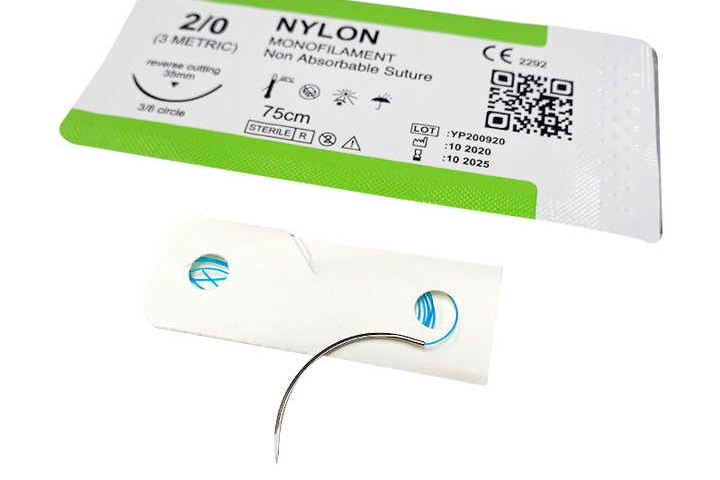
Understanding the 22 Gauge Spinal Needle
Design and Features of a 22 Gauge Spinal Needle
The 22 gauge spinal needle is a widely used medical tool. It is carefully designed for spinal procedures. Its diameter, roughly 0.7 millimeters, strikes a balance. It minimizes patient discomfort. Yet, it remains strong for effective use. The needle often has a slanted tip. This eases insertion and reduces tissue harm. Many 22 gauge needles include a stylet. This prevents tissue blockage during insertion. It ensures a seamless process.
These needles are typically crafted from top-quality stainless steel. This offers strength and resists bending or breaking. Some designs feature an easy-to-use hub. This aids doctors’ handling. Others have markings or depth guides. These ensure accurate placement. Such features boost the needle’s safety and utility in medical products.
Common Uses in Medical Procedures
The 22 gauge spinal needle is due to its ideal size, versatile. It is usually utilized in performing lumbar punctures. It is used in this instance to harvest cerebrospinal fluid (CSF). This helps in diagnosing infections, neurological conditions, or nervous system cancers. It is also used in spinal anesthesia. It is used during surgery or childbirth. It is effective in providing pain relief at low risks.
In addition, the needle is utilized in myelography. The spinal canal is filled with contrast dye to be visualized during the procedure. It also administers medicine directly into the spinal fluid. It treats chronic pain or spasticity. Its precision and negligible pain make it a reliable tool for medical practitioners.
Factors Influencing Pain Perception with Spinal Needles
The Role of Needle Size in Pain Levels
The needle’s size significantly impacts pain during insertion. Smaller needles, like the 22 gauge, cause less discomfort. This is due to their thinner profile. However, they need careful handling to avoid bending. The needle size choice depends on the procedure and patient’s body. Smaller needles reduce tissue damage. They also lower complications like headaches. Still, they may not suit procedures requiring large fluid or drug volumes.
Patient Sensitivity and Individual Differences
Pain differs among individuals. Factors include age, gender, or pain tolerance. Anxiety or fear can increase sensitivity in some patients. Others feel minimal discomfort, even with larger needles. Conditions like obesity or spinal problems can influence pain levels. These may require adjustments in technique or needle size. This ensures comfort and success.
Influence of Insertion Technique on Pain
The doctor’s skill is crucial for patient comfort. Proper positioning reduces pain. Accurate landmark identification helps too. Gentle insertion minimizes discomfort. Doctors trained in atraumatic techniques cause less tissue harm. Using local anesthetics before insertion further reduces discomfort.
Comparison of 22 Gauge Needles to Other Sizes
Differences in Pain Between Smaller and Larger Gauges
Compared to larger needles, like 18 or 20 gauges, the 22 gauge causes less pain. Its smaller size disrupts less tissue. This reduces discomfort. It also lowers risks like post-procedure headaches. However, smaller needles may not suit tasks needing rapid fluid removal. They may also be unsuitable for complex procedures requiring stronger tools. Balancing these factors ensures optimal patient outcomes.
Clinical Preferences for Specific Needle Sizes
Doctors select needle sizes based on the procedure and patient needs. Their expertise also plays a role. The 22 gauge is favored for its versatility. It balances comfort and efficiency. For children, smaller needles like 25 gauge may be better. Their bodies are more delicate. Larger needles might be chosen for adults. These are used for quick fluid drainage or emergency drug delivery.
Techniques to Minimize Pain During Spinal Needle Use
Importance of Proper Patient Positioning
Correct positioning reduces pain during spinal procedures. It provides easier access to the spine. This minimizes unnecessary movement. It also reduces tissue damage. Common positions include sitting or lying on the side. Patients are asked to curve their back like a “C.” This widens the space between vertebrae. It allows smoother needle insertion.
Doctors must ensure patients are relaxed. Tense muscles increase resistance and discomfort. Explaining the procedure reduces anxiety. This encourages cooperation. It leads to a less painful experience.
Use of Local Anesthetics to Reduce Discomfort
Local anesthetics work to minimize the pain of needle insertion. Inserting a few milliliters of lidocaine numbs the skin and tissues. The procedure is that much easier as a result. It works wonderfully with 22 gauge needles, especially. Medical doctors will apply topical anesthetic creams or sprays on occasions. These also provide extra relief for anxious patients.
Operator Skill and Experience in Reducing Pain
A doctor’s expertise is essential for minimizing pain. Skilled practitioners locate anatomical landmarks accurately. This ensures precise needle placement on the first attempt. Fewer attempts mean less discomfort. Experienced doctors use gentle, atraumatic techniques. They maintain steady control over the needle. High-quality tools, like beveled-tip needles, enhance success. They reduce tissue damage.
Patient Experiences and Reported Pain Levels

Subjective Feedback from Patients
Patients often report feeling pressure or mild discomfort. Sharp pain is rare with 22 gauge needles. This highlights the importance of proper needle size and pain management techniques. However, some patients are more sensitive. Anxiety or low pain tolerance may play a role. Reassurance and clear communication improve their experience.
Studies on Pain Perception with 22 Gauge Needles
Research confirms smaller needles like the 22 gauge cause less pain. Their thin profile reduces tissue damage. Atraumatic designs, like pencil-point tips, further decrease discomfort. One study found patients experienced far less pain with 22 gauge needles. This was compared to 18 or 20 gauge needles during lumbar punctures. These findings emphasize the need for tailored needle choices.
Implications for Clinical Practice
Balancing Needle Size, Procedure Efficacy, and Patient Comfort
Choosing the right needle size balances pain reduction and procedure success. It also prioritizes patient comfort. Smaller needles like the 22 gauge reduce pain. They also lower complications. However, they may not suit procedures requiring large fluid or drug volumes. Doctors must consider patient anatomy and procedure goals. Their skills also guide the best choice.
Recommendations for Healthcare Providers
Doctors should use evidence-based techniques. These prioritize patient comfort. High-quality tools like Medco’s Spinal Needles are recommended. They are designed for safety and effectiveness. Their ergonomic hubs improve handling. This enhances accuracy and patient experience. Choosing Medco reflects a commitment to excellent care. It leads to better outcomes.
For dependable spinal procedure tools, explore Medco’s service for medical products today!
FAQ
Q: Does a 22 gauge spinal needle cause significant pain during procedures?
A: The discomfort felt with a 22 gauge spinal needle varies. It depends on factors like the patient’s pain threshold, the type of procedure (e.g., spinal anesthesia or lumbar puncture), and the expertise of the medical professional. The 22 gauge needle is fairly slender. This may lessen tissue damage compared to thicker needles. As a result, it could cause less pain. Still, some pressure or unease is typical during insertion. Local numbing agents are often applied to reduce discomfort. Always talk to your doctor for tailored advice.
Q: What is a 22 gauge spinal needle used for?
A: A 22 gauge spinal needle is frequently employed for spinal anesthesia and lumbar punctures. Lumbar punctures collect cerebrospinal fluid for testing. It’s also used in some pain relief procedures. Its size is appropriate for adults and occasionally children, depending on the task. The needle is crafted to ensure both accuracy and patient comfort.




